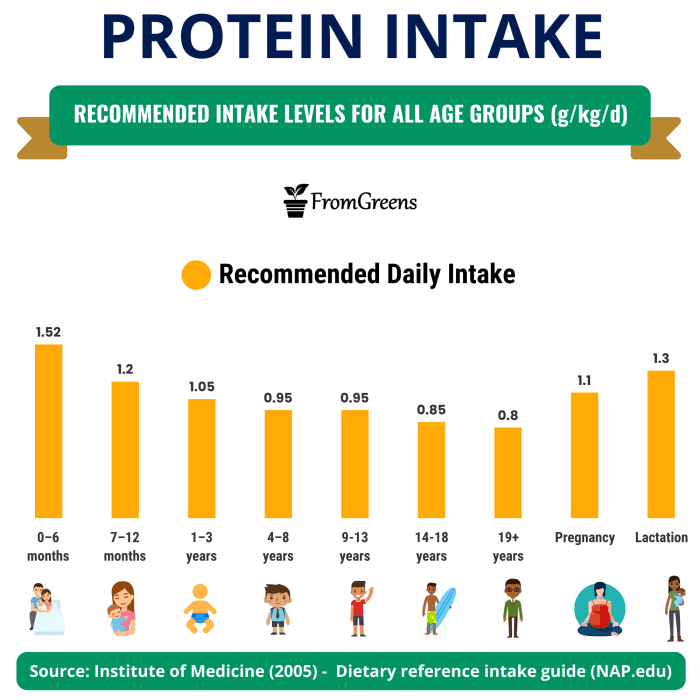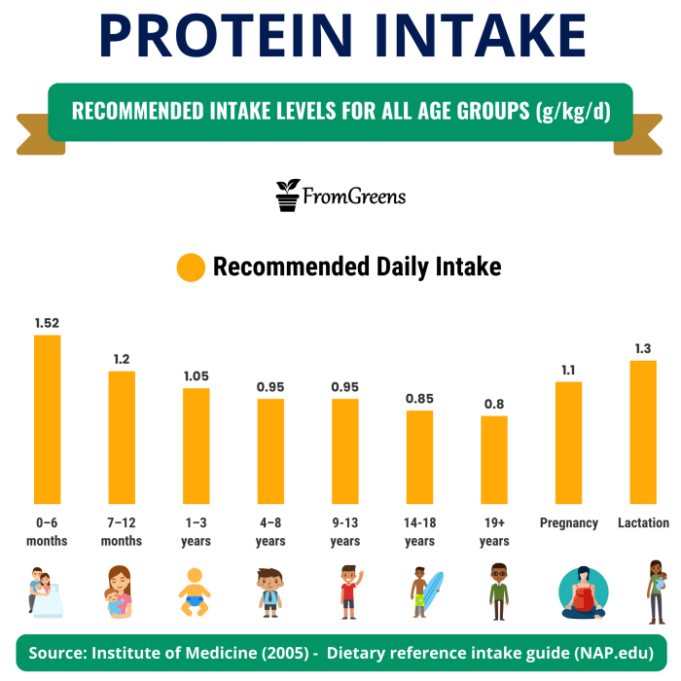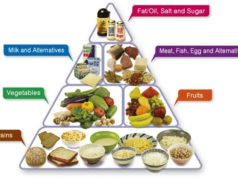Recommended Dietary Allowance for different age groups, a cornerstone of healthy living, guides individuals across the lifespan to meet their nutritional needs. From infancy to old age, these guidelines provide a roadmap for consuming essential nutrients to support optimal growth, development, and overall well-being. Understanding these recommendations empowers individuals to make informed dietary choices that promote health and prevent nutritional deficiencies.
The Recommended Dietary Allowance (RDA) is a science-based benchmark established by the Food and Nutrition Board of the National Academies of Sciences, Engineering, and Medicine. It represents the average daily intake level of a nutrient that is sufficient to meet the needs of nearly all healthy individuals in a specific life stage and gender group. The RDAs are based on extensive scientific research, taking into account factors like age, sex, growth, pregnancy, and lactation. This meticulous process ensures that the recommended intake levels are appropriate for individuals at various stages of life.
Introduction to Recommended Dietary Allowances (RDAs): Recommended Dietary Allowance For Different Age Groups
Recommended Dietary Allowances (RDAs) are the daily dietary intake levels of essential nutrients that are considered sufficient to meet the nutritional needs of practically all healthy individuals in a particular life stage and gender group. They represent the average daily level of intake that is sufficient to meet the nutrient requirements of 97.5% of healthy individuals in a particular life stage and gender group. RDAs are crucial for promoting good health, preventing nutrient deficiencies, and supporting optimal growth and development.
History of RDAs
The concept of RDAs emerged in the early 20th century, driven by the need to address widespread malnutrition and understand the role of specific nutrients in maintaining health. In 1941, the National Research Council (NRC) of the United States published the first set of recommended dietary allowances, known as the Recommended Dietary Allowances (RDAs). The RDAs were initially based on scientific evidence available at the time, and they have been revised and updated over the years to reflect advancements in nutrition science and changing dietary patterns.
Factors Considered in Setting RDAs, Recommended Dietary Allowance for different age groups
The setting of RDAs is a complex process that involves considering various factors. These factors include:
- Estimated Average Requirements (EARs): EARs represent the average daily intake level of a nutrient that is estimated to meet the requirement of 50% of healthy individuals in a particular life stage and gender group. They serve as the foundation for setting RDAs.
- Nutrient Requirements: The amount of each nutrient required to maintain health, prevent deficiency, and support optimal growth and development varies depending on factors such as age, gender, pregnancy, lactation, and physiological status. These requirements are determined through scientific research and studies.
- Nutrient Bioavailability: The amount of a nutrient that is absorbed and utilized by the body varies depending on the food source and other dietary factors. This bioavailability is taken into account when setting RDAs.
- Safety: RDAs are set at levels that are considered safe for most individuals. They aim to avoid potential adverse effects associated with excessive intake of certain nutrients.
- Dietary Patterns: RDAs are also influenced by the typical dietary patterns of a population. They are designed to be achievable and realistic within the context of a balanced and varied diet.
RDAs for Different Age Groups
The Recommended Dietary Allowances (RDAs) for essential nutrients vary significantly across different age groups, reflecting the unique nutritional needs of individuals at different stages of life. These variations are influenced by factors such as growth and development, energy requirements, and physiological changes. This section will explore the RDAs for various nutrients across different age groups, providing insights into the rationale behind these differences.
RDAs for Different Age Groups
The following table presents a summary of RDAs for key nutrients across different age groups, ranging from infancy to older adulthood.
| Nutrient | Infants (0-12 months) | Children (1-13 years) | Adolescents (14-18 years) | Adults (19-50 years) | Older Adults (51+ years) |
|---|---|---|---|---|---|
| Energy (kcal) | 700-1000 | 1000-2200 | 2000-3200 | 2000-2500 (men), 1600-2000 (women) | 1600-2000 (men), 1200-1600 (women) |
| Protein (g) | 14-20 | 19-34 | 46-52 (men), 41-46 (women) | 56-63 (men), 46-50 (women) | 46-54 (men), 46-50 (women) |
| Carbohydrates (g) | 60-100 | 130-210 | 130-310 | 130-310 (men), 130-220 (women) | 130-220 (men), 130-220 (women) |
| Fat (g) | 30-40 | 25-35 | 25-35 | 20-35 (men), 20-35 (women) | 20-35 (men), 20-35 (women) |
| Vitamin A (µg) | 400-500 | 400-600 | 700-900 | 900 (men), 700 (women) | 900 (men), 700 (women) |
| Vitamin C (mg) | 40-50 | 15-25 | 75-90 | 75-90 (men), 75-90 (women) | 75-90 (men), 75-90 (women) |
| Calcium (mg) | 200-260 | 800-1300 | 1300 | 1000 | 1200 |
| Iron (mg) | 11 | 8-11 | 11 (men), 15 (women) | 8 (men), 18 (women) | 8 (men), 8 (women) |
| Zinc (mg) | 3-5 | 5-11 | 11 (men), 9 (women) | 11 (men), 8 (women) | 11 (men), 8 (women) |
| Sodium (mg) | 200-370 | 1500-2300 | 1500-2300 | 1500-2300 | 1500-2300 |
Explanations of Variations in RDAs
The variations in RDAs across different age groups are driven by several factors, including:
- Growth and Development: Infants and children require higher amounts of certain nutrients, such as protein, calcium, and iron, to support their rapid growth and development. As individuals reach adulthood, their growth slows down, and their nutrient needs stabilize.
- Energy Requirements: Energy needs vary significantly based on age, sex, activity level, and body composition. Children and adolescents have higher energy requirements due to their active growth and development. Adults generally require less energy, particularly as they age and become less active.
- Physiological Changes: As individuals age, their bodies undergo various physiological changes that can impact their nutrient requirements. For example, older adults may experience reduced absorption of certain nutrients, such as vitamin B12, and may have increased needs for calcium and vitamin D to maintain bone health.
- Pregnancy and Lactation: Pregnant and lactating women have significantly increased nutrient needs to support fetal growth and development, as well as milk production. These increased needs are reflected in higher RDAs for several nutrients, including protein, iron, calcium, and vitamin D.
Energy Requirements

The energy we consume from food is measured in calories. These calories are essential for our bodies to function, grow, and maintain our overall health. Our energy needs vary based on several factors, including our age, sex, activity level, and body composition.
Factors Influencing Energy Requirements
Our energy requirements are influenced by a combination of factors, including:
- Age: As we age, our metabolic rate slows down, and our energy needs generally decrease. This is because our bodies require less energy for growth and development. For instance, a teenager undergoing rapid growth will have higher energy needs than an elderly individual.
- Sex: Men typically have higher energy requirements than women due to their generally larger muscle mass and higher metabolic rate.
- Activity Level: Our energy needs increase with our activity level. A highly active individual, such as an athlete, will require significantly more calories than someone who leads a sedentary lifestyle. For example, a marathon runner might require 3,000-4,000 calories per day, while a desk worker might need only 2,000 calories.
- Body Composition: Muscle tissue burns more calories at rest than fat tissue. Therefore, individuals with a higher proportion of muscle mass will have higher energy requirements.
Energy Requirements Across Age Groups
Energy needs vary considerably across different age groups.
- Infancy and Childhood: During infancy and childhood, growth and development are rapid, leading to high energy requirements. For example, a 6-month-old infant might need around 800 calories per day, while a 5-year-old child might require around 1,800 calories.
- Adolescence: Adolescence is another period of rapid growth, leading to increased energy needs. A teenage girl might need 2,200 calories per day, while a teenage boy might require 2,800 calories.
- Adulthood: Energy needs generally stabilize during adulthood. However, they can fluctuate based on activity levels, pregnancy, and breastfeeding. For example, a pregnant woman might need an additional 300 calories per day.
- Older Adulthood: Energy needs tend to decline with age, as our metabolic rate slows down and we become less physically active. A sedentary older adult might need around 1,600 calories per day.
Consequences of Imbalances in Energy Consumption
Maintaining a balanced energy intake is crucial for our health.
- Excess Energy Consumption: Consuming more calories than our bodies need can lead to weight gain and an increased risk of chronic diseases such as heart disease, type 2 diabetes, and some cancers.
- Insufficient Energy Consumption: Not consuming enough calories can lead to fatigue, weakness, and nutrient deficiencies. In severe cases, it can lead to malnutrition and other health problems.
The Recommended Dietary Allowance (RDA) is tailored to your age and life stage, ensuring you get the nutrients you need for optimal health. Understanding your individual RDA can be a great starting point for creating a healthy diet plan.
For more detailed guidance on creating a successful diet strategy, check out How to Stick to a Diet: Your Ultimate Guide to Success , which provides valuable tips and strategies. Once you have a plan, you can easily adjust it to meet your RDA based on your age and activity level.
Meeting the Recommended Dietary Allowance (RDA) is crucial for all age groups, ensuring optimal health and well-being. For those considering a vegetarian lifestyle, it’s essential to understand how to obtain all necessary nutrients from plant-based sources. Is Vegetarian Diet Healthy: A Plant-Based Journey provides valuable insights on this topic.
By carefully planning your meals and incorporating diverse plant-based foods, you can easily meet the RDA, regardless of your age.
The Recommended Dietary Allowance varies depending on age, gender, and activity level. A healthy eating plan that caters to these needs can be found in the How to Start the Mediterranean Diet: A Delicious Journey to Wellness guide. This diet emphasizes whole foods, fruits, vegetables, and healthy fats, which can help meet the nutritional requirements of individuals across different age groups.
























